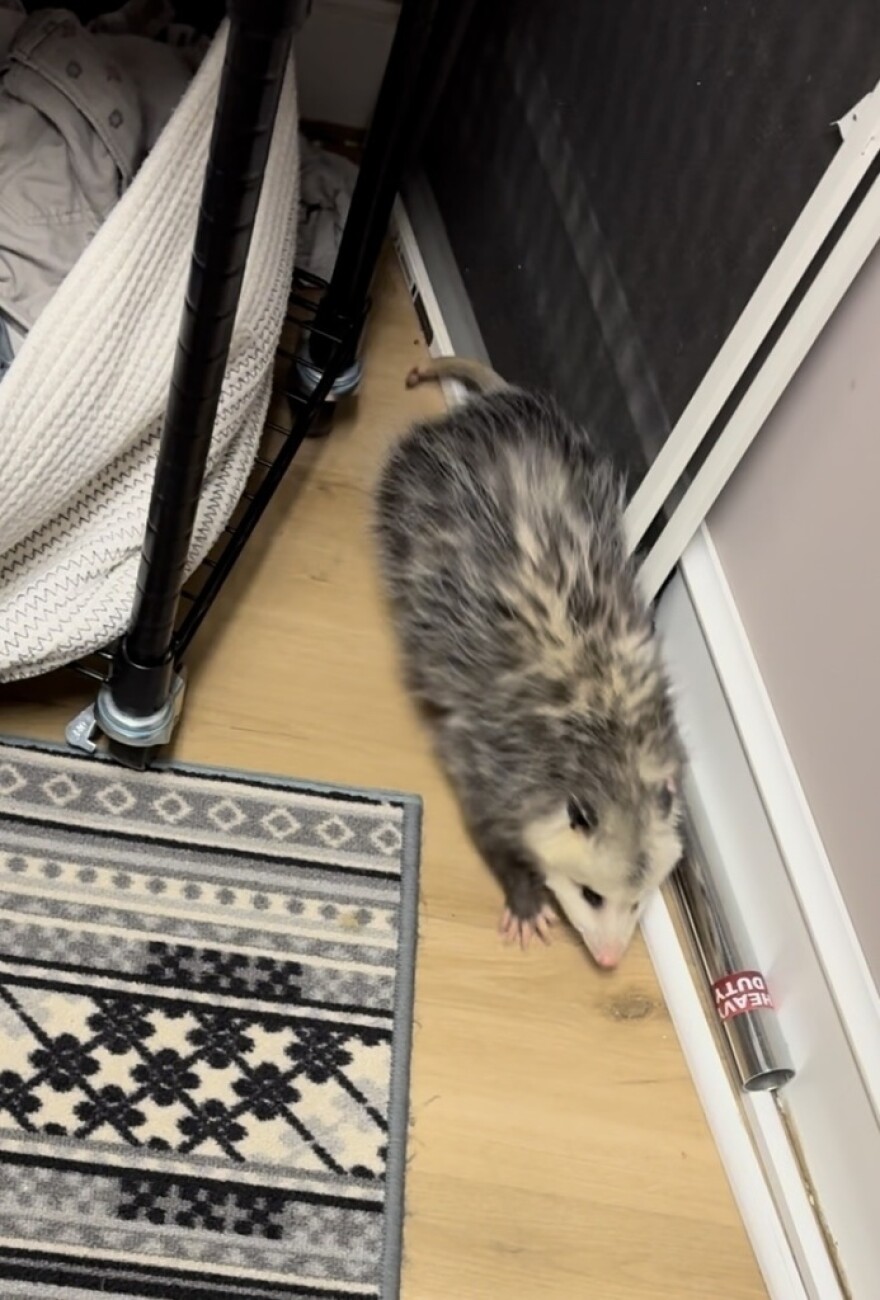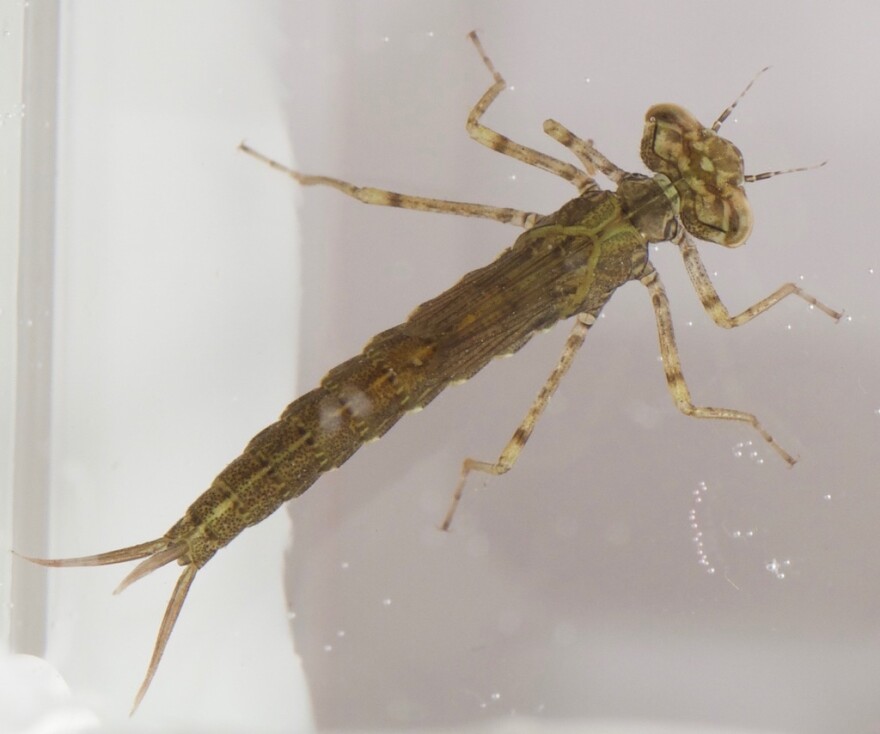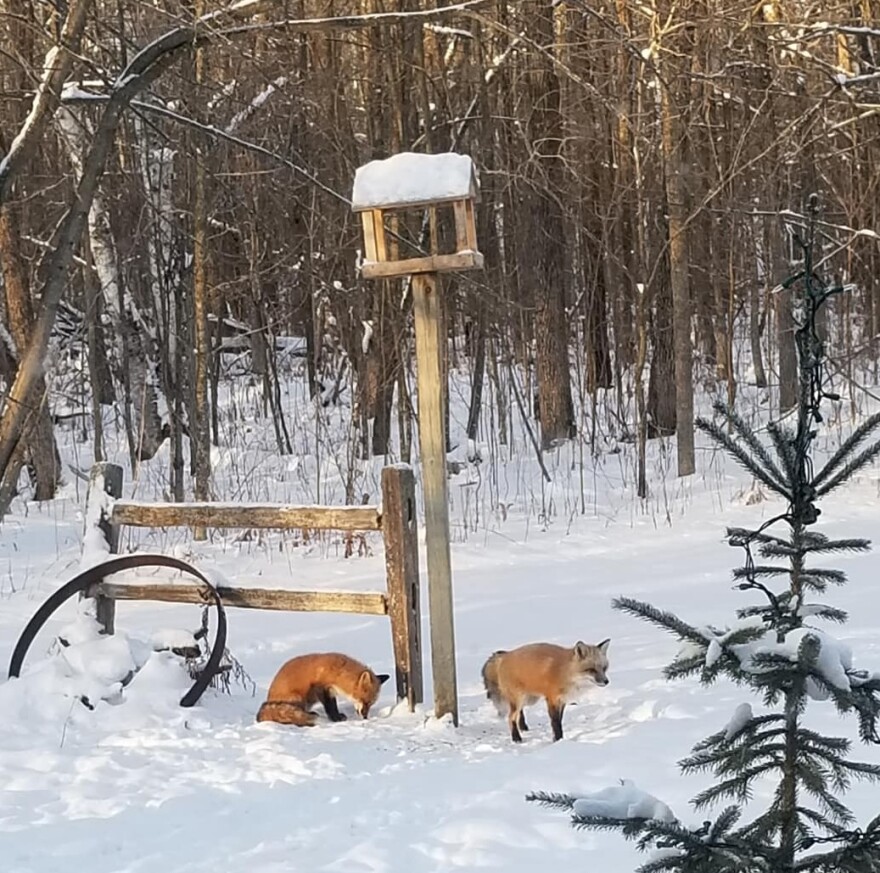This week brings a new school to the Phenology in the Classroom Program – welcome, Saint Croix Preparatory Academy! We have 10 reports of warm weather, shrinking snowpacks, and some fascinating aquatic macroinvertebrates.
Please don’t hesitate to reach out with your observations, nature tales and insights! Get in touch with me (cmitchell@kaxe.org), John Latimer (jlatimer@kaxe.org), or text "phenology" to 218-326-1234.
Prairie Creek Community School in Northfield

“Hi, this is Jenna... “
“...And this is Amelia ...”
“...and we're from Prairie Creek Community School, way down south in Northfield, MN.”
“We <unclear> with all this fog we've been having. You have to be careful on the roads. There has been a lot of black ice, and Sophia saw three cars in the ditch this morning.”
“This is supposed to be a phenology report, not a traffic report!”
“I know, I know, but the weather sure has been strange.”
“There have been a lot of signs of spring.”
“Michelle heard the 'fee-bee' call of the chickadees on Jan 8.”
“That's just about on time, but we also heard the first ‘oh-ricky’ song on Jan. 28. That's about a week earlier than usual.”
“The dogwood is starting to turn bright red and the willows are bright green and yellow.”
“That's just about on time too.”
“Ruby, Sophia and I all saw turkeys this week.”
“They were noisy too.”
“Viggo and Sophia saw a lot of deer by the road, and Ruby saw fawn. There was a possum in Michelle's neighborhood. Robbie saw a crow eating roadkill.”
“And I saw a squirrel on the roof.”
“That's all from Prairie Creek.”
“One more step along the phenology journey.”
Oak Grove Elementary School in Bloomington
“Hi, this is Ellie, Anika, Lindsay and Gordon reporting from Oak Grove Elementary in Bloomington, Minnesota.

“This week's weather has been misty and cloudy, with a high of 34 degrees today. We've had minimal precipitation this week.
“With our animal observations, we noticed a red fox and a Black-capped Chickadee that flew right into the camera. We also saw a lot of tracks and scat.
“With our plant observations, we noticed that not much has changed.
“We are wondering why we heard way less birds than last time.
“That's all for today. Stay tuned for the next OGE Phenology Club nature episode. Bye!"
Saint Croix Preparatory Academy in Stillwater

“This is Jade and Pihu with the phonology report from Saint Croix Preparatory Academy in Stillwater.
“This week, our class observed our House Finch pair has been feeding less often at our feeders. We think this is due to the warmer temperatures this week. Last week, when the weather was close to or below 0, we noticed them at the feeders really often.
“On Jan. 26, there was no snow at our school campus. We observed deer tracks, a deer bed and a rabbit. We also observed many squirrel nests, though we did not see any squirrels.
“Look at a bird, look at a tree: notice nature - phenology!”
Roots and Wings Forest School in New York Mills
“This is George, this is Finley, this is Timmy, this is Kip, this is Rose reporting from Roots and Wings Forest School in New York Mills.”
“I saw fungus. It was brown and red.”
“I saw a beaver chip off a birch tree. It was by the creek.”
“We saw a rub on a tree and we also found a deer bed and some poop and like hay-ish grass, and it was kind of dry from when the deer laid on it. But underneath it was snow.
“I saw a woodpecker damage on a tree. I thought it was going to fall down. It was a dead pine tree. There was a light, light rain. I could feel some on my nose.”
“You also wanted to talk about a fort? And now you're chewing a carrot. <giggles>”
“I saw a nature fort. Some of it has changed. There was more snow, and it was icy.”
“When I was at home, I saw three drakes. I could tell because of their beards.”
“My friend Finley saw some grouse poop in the weeds like Kip was talking about, and I also saw some sap that was frozen on a tree. And then, the creek is almost fully covered with ice, but it's not: there's still open water.”
“Thanks for listening! Stay wild!”
Eagle View Elementary in Pequot Lakes

“This is the phenology report from Eagle View Elementary School for the week of Jan. 23-29.
“It was another week of warm temperatures, and our snow is melting quickly.
“It has been very foggy the past few mornings. The snow we have left on the ground is very icy and packed down. We saw that there is some green grass showing around the base of some trees. The snow is melting in a circle around the trees.
“We are still finding a lot of deer, rabbit and squirrel tracks in the snow. Last week Mrs. Harman saw a coyote on the ice when she came to school! It must be easy for it to walk on the ice with the crusty snow on top.
“Our kindergarteners are reading a book called Over and Under the Snow and they are exploring to see if they can find any tunnels from voles or other signs of animals. Today they heard a lot of birds singing. They said that the air felt warmer on their faces and even smelled fresh this morning.
“The temperature is supposed to be between 35 and 40 degrees every day this week. I wonder how much snow we will have left by the end of the week?
“This is Molly and Declan reporting from Pequot Lakes.
“Friday is Groundhog Day. Do you predict that the groundhog will see his shadow?"
North Shore Community School near Duluth
“Hello from North Shore Community School on the north shore of Lake Superior. This is the Phenology Report for the week of Jan. 20, 2024. My name is Claire, and I am your phenologist for this week!
“On Saturday, Jan. 20, we had 9 hours and 19 minutes of daylight. This is an increase of 13 minutes from a week ago! As of Monday, Jan. 22, Duluth has a recorded deficit of snow of 30 inches! Also on this night, the northern lights were visible in some areas.

“On Thursday, Jan. 25, there was a full moon. It is called the Great Spirit Moon according to the Ojibwe.
“Compared to last week’s frigid temperatures of below zero with dangerously cold wind chills and inside recess, this week has been feeling warmer with temperatures above freezing. Local weather forecasters have stated that above average temperatures of 15-20 degrees above will continue through the rest of January and potentially into the first week of February. On Jan. 25, Ms. Jackson’s class noticed that the snow was almost the perfect consistency for making snowballs. The temperature was 36 degrees. Also during that evening, there was some freezing drizzle. On Friday Jan. 26, our area was under a dense fog advisory.
“On Saturday, Jan. 20, Ms. Urban had two Red Crossbills at her birdfeeder. On Thursday, Jan. 25, she noticed a flock of three Common Redpolls near the pavilion. Both crossbills and redpolls do not have traditional migrations like other birds. They travel nomadically in search of good seed or cone crops.
“On Thursday, Jan. 25, Iris Mae noticed the melted snow dripping off the trees as she was trying to write in her phenology journal.
“On Sunday, Jan. 21, Ms. Jackson noticed several “deer beds” in her snowy field at her house. On Thursday, Jan. 25, Henry noticed small mouse tracks in the snow at his sit spot when he was journaling on the school nature trail. Also, that evening, Adella spotted a gray squirrel bringing lots of leaves up into a tree. She thinks it was adding to its nest.
“Claire spotted fox tracks in the snow during EE class on Jan. 24 while we were burning an old pile of invasive buckthorn cut this fall. I followed the tracks and noticed cottontail rabbit scat and fur along the trail. It looked like the fox was on the hunt for its next meal. Henry noticed on Jan. 24 that the ice rink at his house was melting due to the above freezing temperature. On Thursday, Jan. 25, Rebecca measured the ice on the Schmidt Creek at school. The ice was about an average of 5 inches thick. Last week, when Iris Mae measured it, it was about 7 inches thick.
“This concludes the phenology report. Have a great week and be observant!”
West Rapids Elementary in Grand Rapids

“Hello, my name is Brooklyn and this is Taylor. This is our phonology report for Mr. Cody's fourth-grade class at West Elementary School.
“It was a cloudy but warm day for sampling some pond water. Unfortunately, our pond didn't have any water under the ice. Bummer! Mr. Latimer had some leftover samples from Cohasset.
“Through a microscope, we were able to observe some living macroinvertebrates. These include midges, dragonfly nymphs, blood worms, water fleas, and damselfly nymphs. It's wild, all that is living under the ice.
“Stay wild! -Brooklyn and Taylor.”
TrekNorth High School in Bemidji
The italicized portion of this transcript was cut off in the audio recording.
“Hello from TrekNorth High School in Brrrrrmidji, Minnesota!
“I’m Collin and I'm Cole, and we are going to share what we did in nature with our stats class for the week of Jan. 22-26.”

“A big part of learning statistics is sharpening our observation skills and learning to ask questions, so phenology is a great fit for this class!”
“We have been recording data each day to start class. Things like sunrise, length of daylight, temperature and number of students in class. We observed that the sun is rising one minute earlier each day, but length of daylight increases between two and three minutes each day. We have also been trying to track the path of the sun through a window in our classroom, as Mr. Latimer suggested. However, it was cloudy all week and we didn’t get to see the sunlight through the window yet.”
“On Friday, we went for a walk to look for shapes in nature and to practice asking questions. We found triangles made of pine needles on the ground and we wondered what kind of pine tree has groups of 2 needles. We looked for rectangles, but only found one rock that looked kind of like a rectangle, as most were round. One of the students remembered that on a recent class trip to Ely, there were more rocks there that looked like rectangles.”
“We also found lots of circles and cylinders while looking at trees. We asked why trees grow circular and not as rectangles or ovals.”
“From TrekNorth High School in Bemidji, I'm Collin and I'm Cole and we’re doing math in nature!”
Lake of the Woods School in Baudette

“This is Molly with the phenology report from Baudette for Jan. 19-26.
“Multiple students living in Baudette have commented about seeing deer or deer tracks in their yard this week. Could these deer be trying to escape predators? Are they looking for a tasty snack at a bird feeder, cedar tree, or fruit tree? Or are they investigating for a cozy place to bed down? Maybe all of the above.
“On Thursday, Layla reported seeing a red fox run across her driveway while she was waiting for the bus. She has also witnessed this fox with a partner in the woods surrounding her house. Canine mating season is here.
“Finally, Aurora reports seeing deer in the fields each day on her way to school. The bucks are still holding onto their antlers.”
Cohasset Elementary School

“We have made a lot of observations over the past week.
“Since the winter solstice we have gained about one hour of daylight. We are gaining about two and half minutes a day right now. Sunday, we had hoarfrost due to the moisture in the air.
“Last week we got to sample some water from our pond behind the school, we saw a lot more than we thought. We saw dragonfly, mayfly, and damselfly larva. We also saw some other organisms that were see-through or translucent. One had air sacks to help it float or sink in the water. We learned predators have big eyes on the side of their heads to help them see prey. We got to use microscopes to see this up close, which was really cool.
“We are looking forward to another week of observations, thank you for listening. Like Mr. Latimer always says… onward and awkward!”
That does it for this week! For more phenology, <b>subscribe</b> to our Season Watch Newsletter or visit the Season Watch Facebook page.
Funding for this project was provided by the Minnesota Environment and Natural Resources Trust Fund as recommended by the Legislative-Citizen Commission on Minnesota Resources (LCCMR).













